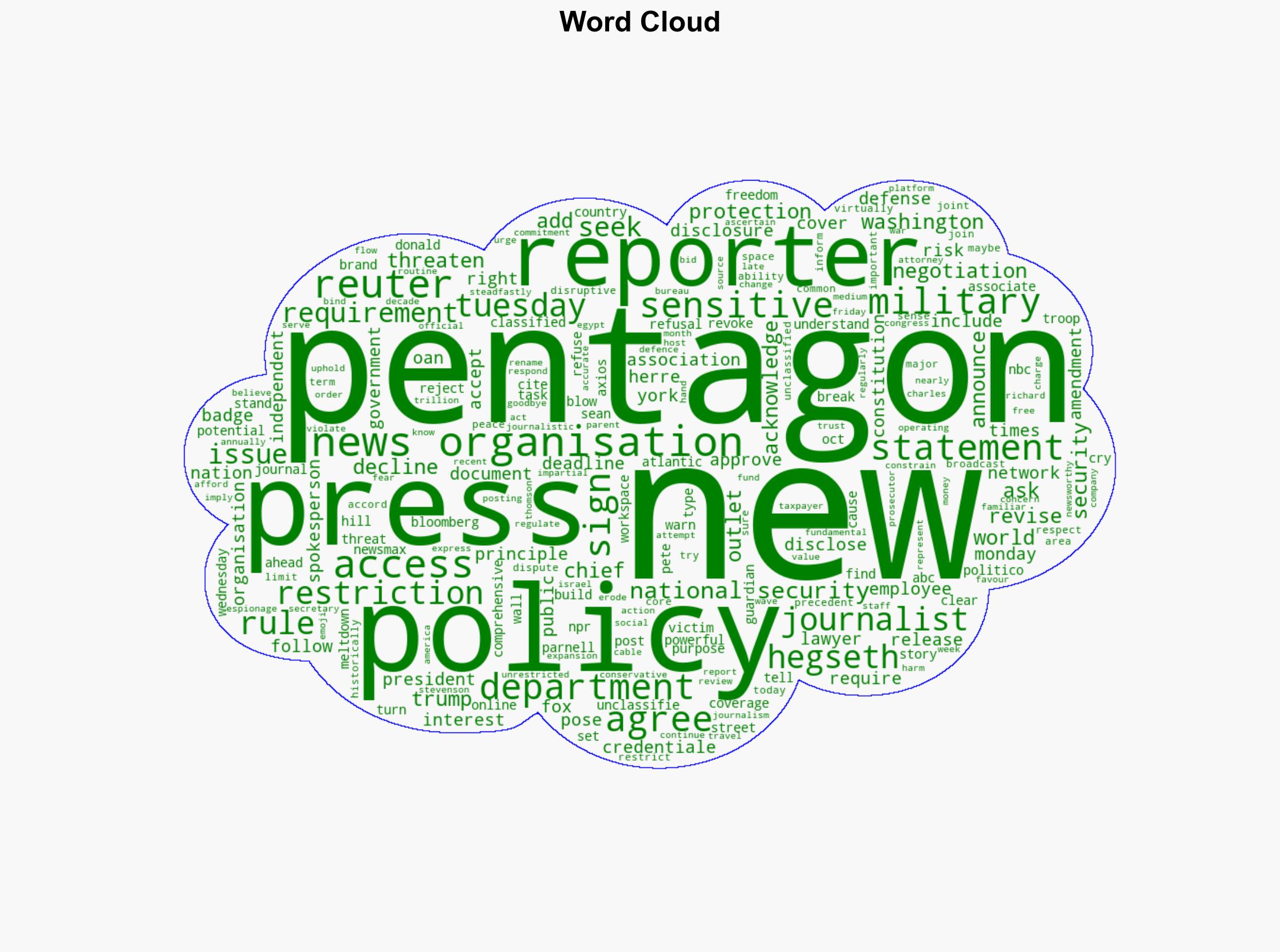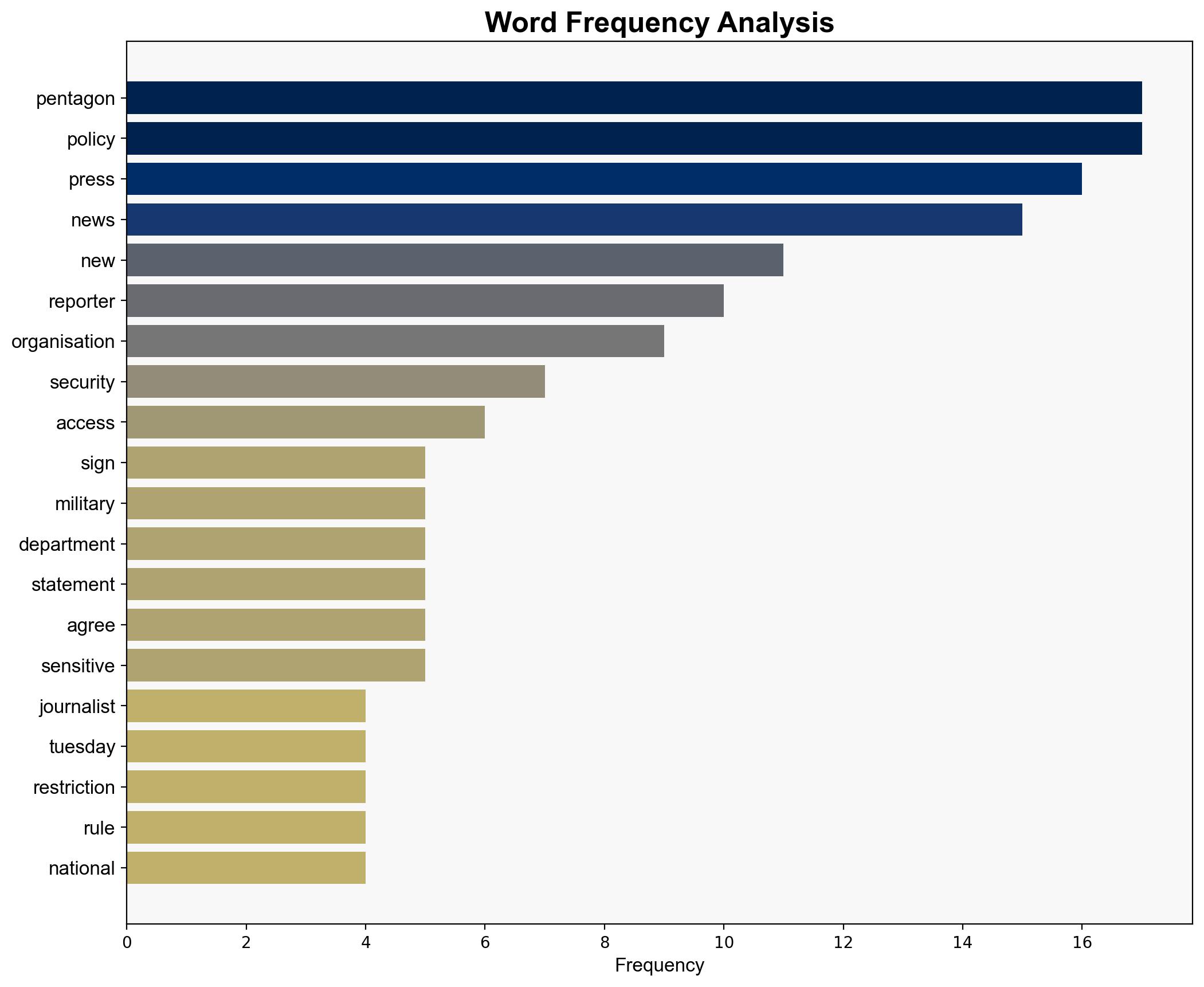US news outlets reject Pentagon press access policy – CNA
Published on: 2025-10-15
Intelligence Report: US news outlets reject Pentagon press access policy – CNA
1. BLUF (Bottom Line Up Front)
The most supported hypothesis is that the Pentagon’s new press access policy is primarily aimed at enhancing national security by controlling sensitive information dissemination. However, this move risks significant backlash from major media outlets, potentially undermining public trust in military transparency. Confidence level: Moderate. Recommended action: Initiate dialogue between the Pentagon and media representatives to address concerns and find a compromise that upholds both security and press freedom.
2. Competing Hypotheses
1. **Hypothesis A**: The Pentagon’s new press access policy is a strategic measure to enhance national security by preventing unauthorized disclosure of sensitive information.
– **Supporting Evidence**: The policy requires journalists to acknowledge security risks and restricts access to sensitive areas, aligning with national security objectives.
– **Contradictory Evidence**: Major news outlets argue that these restrictions impede press freedom and transparency.
2. **Hypothesis B**: The policy is a tactical maneuver to control media narratives and limit negative coverage of military operations.
– **Supporting Evidence**: The refusal of numerous major news organizations to sign the policy suggests a perception of overreach and potential suppression of critical reporting.
– **Contradictory Evidence**: The Pentagon’s stated rationale focuses on security, not narrative control.
3. Key Assumptions and Red Flags
– **Assumptions**:
– Hypothesis A assumes that the policy’s primary intent is security-focused without ulterior motives.
– Hypothesis B assumes the Pentagon has an interest in controlling media narratives beyond security concerns.
– **Red Flags**:
– Lack of transparency in the negotiation process between the Pentagon and media outlets.
– Potential bias in media reporting due to perceived threats to press freedom.
4. Implications and Strategic Risks
– **Implications**:
– Erosion of trust between the media and the military could lead to increased public skepticism about military operations.
– Potential for increased legal challenges and public protests against perceived government overreach.
– **Strategic Risks**:
– Escalation of tensions between the government and media could lead to broader debates on press freedom and national security.
– International perception of the US commitment to free press principles may be negatively impacted.
5. Recommendations and Outlook
- Facilitate a roundtable discussion between the Pentagon and major news organizations to address mutual concerns and seek a balanced approach.
- Develop clear guidelines that protect sensitive information while ensuring transparency and press freedom.
- Scenario Projections:
– **Best Case**: A compromise is reached that satisfies both security and press freedom concerns, enhancing trust.
– **Worst Case**: Continued standoff leads to legal battles and public protests, damaging institutional credibility.
– **Most Likely**: Incremental adjustments to the policy following public and media pressure, with ongoing negotiations.
6. Key Individuals and Entities
– Sean Parnell
– Pete Hegseth
– Richard Stevenson
– Charles Herre
7. Thematic Tags
national security threats, press freedom, media relations, government transparency




